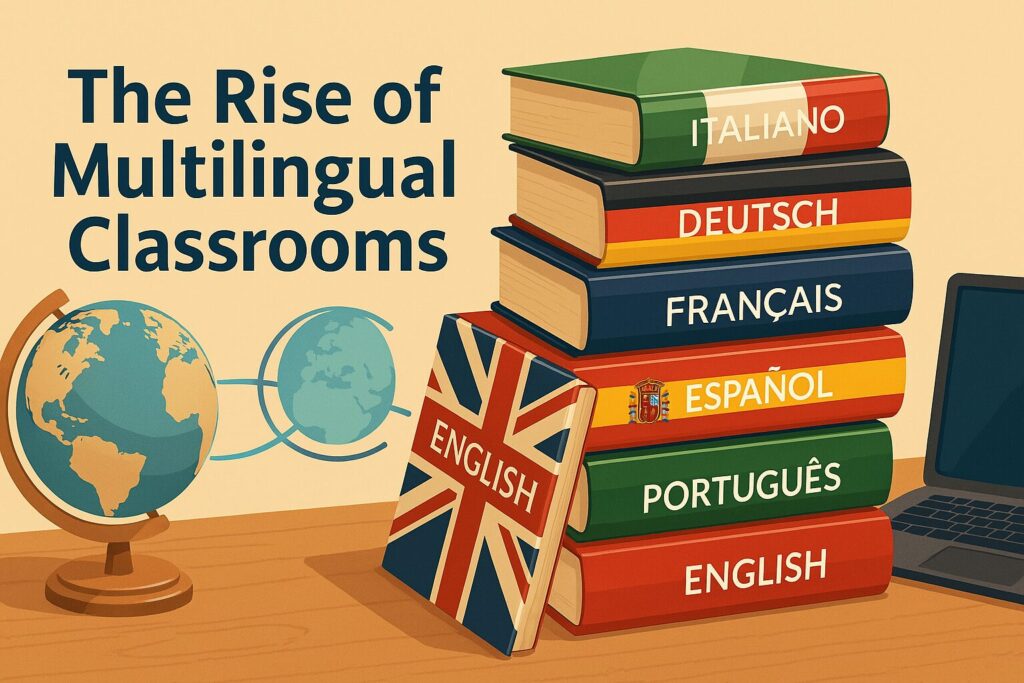
As our world becomes increasingly connected, classrooms are transforming into colourful representations of cultural diversity. Gone are the days of the static monolingual classroom, and in their place is a welcoming and linguistically diverse environment. The plurality of languages in multilingual classrooms reflects the significant changes that have occurred in society, predominantly driven by globalization, migration, and mobility in education. Multilingual classrooms are not simply a reflection of change—they are agents of change. Although the transformation into multilingual classrooms abound with opportunities for students and educators alike, this transition results in new challenges that should be approached with care and forethought.
Valuing Diversity: Opportunities in Multilingual Classrooms
The multilingual classroom provides great resources and positive benefits for students that can contribute meaningfully to their educational and social experiences. The diversity of language creates greater cognitive development in interactions, which can help a student develop a broader perspective of the world.
- Improved Cognitive Functions.
Those students who are learning multiple languages often have better short-term memory, improved problem-solving, and the ability to multitask. Simply being in a bilingual or multilingual classroom requires the brain to think adaptively and flexibly.
- Cultural Perspectives.
Language is related directly to culture. Being in a multilingual classroom brings about first-hand perspectives of other people’s tradition. Different cultural perspectives allow students to be sensitive to the values and worldview of others in their community and the world at large.
- Enhanced Global Preparedness
As the world moves toward a more globalized society and economy, students will have an advantage over others in the global job market and in cross-cultural interactions by being multilingual.
- Increased Language Learning Ability
Young children are particularly adept at language learning. Multilingual children are exposed to more language use, and potentially more linguistic input, which can help in further language learning.
A Takeaway of Key Benefits:
- Fosters intercultural understanding
- Creates inclusive communities in the classroom
- Provides educational outcomes based on cognitive flexibility
- Equips students for global opportunities
Navigating the Landscape: Obstacles to Multilingual Education
Despite the many advantages of being multilingual in an education setting, it is necessary to be aware of the significant challenges that come with a multilingual classroom. These challenges must be addressed effectively to ensure equitable education for all learners. The challenges include the following:
- Language Barriers
The difference in language proficiency levels can affect students’ levels of participation, understanding, and engagement in learning, particularly for students who are inexperienced in the language of instruction.
- Teacher Preparedness
Teachers may not be trained in multilingual education. Teachers, without tools and further support, can struggle to meet the needs of diverse learners in multilingual settings.
- Curriculum and Assessment Challenges
Curriculum and assessment are developed with standard learners (monolingual) in mind. In doing so, they are less relevant and often more difficult for multilingual learners to access due to the expectations that they should exhibit levels of performance on par with monolingual students.
- Social Integration
Within a burgeoning multilingual setting, students from different language groups may face social integration and empathy challenges. When students do not feel accepted socially, they may also fear bullying.
Important Issues to Address:
- Achieving inclusive lesson planning
- Developing language support programs
- Providing teacher professional development
- Encouraging peers to work together and recognize cultural differences
Conclusion
The emergence of multilingual classrooms is not a trend; it reflects the multicultural nature of society in the 21st century. This emergence presents unique challenges but also provides opportunities to create more diverse, inclusive, and globally relevant education. With the right steps, and by working with the challenges, teachers can create learning spaces in which all students can succeed, no matter what language of instruction they speak.


